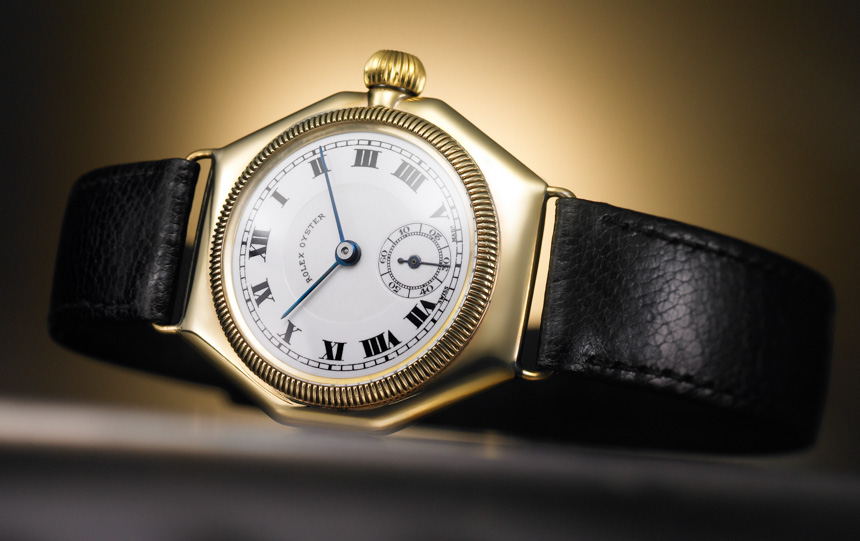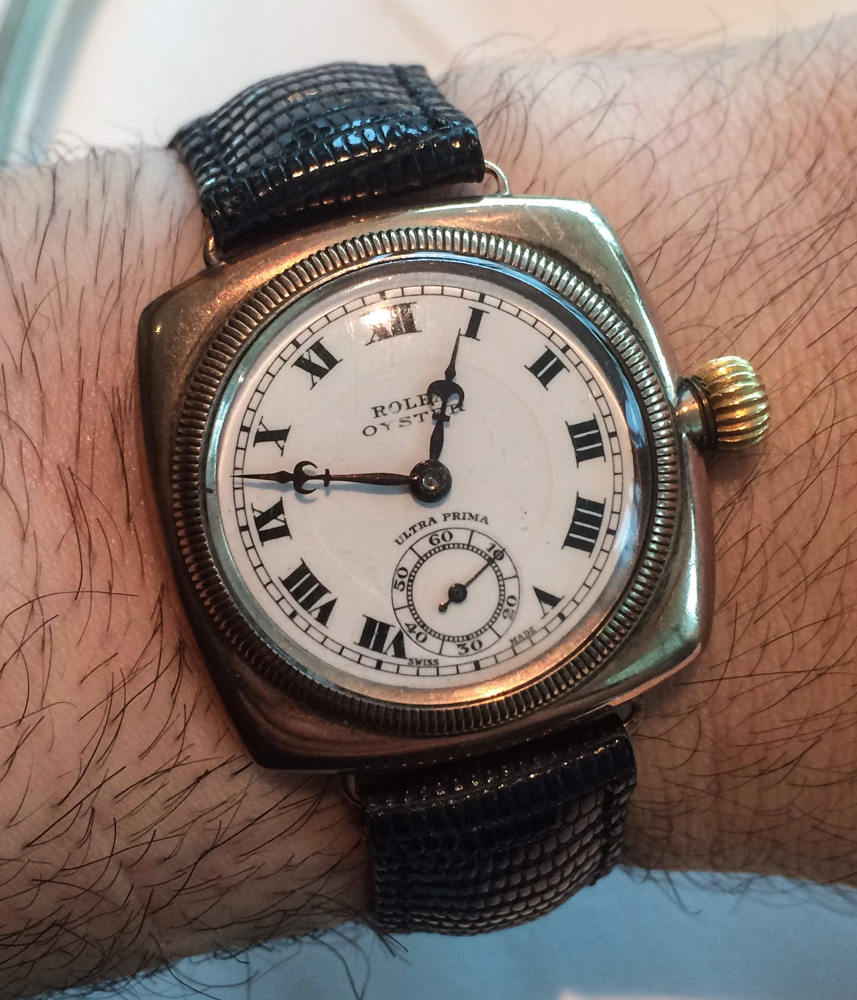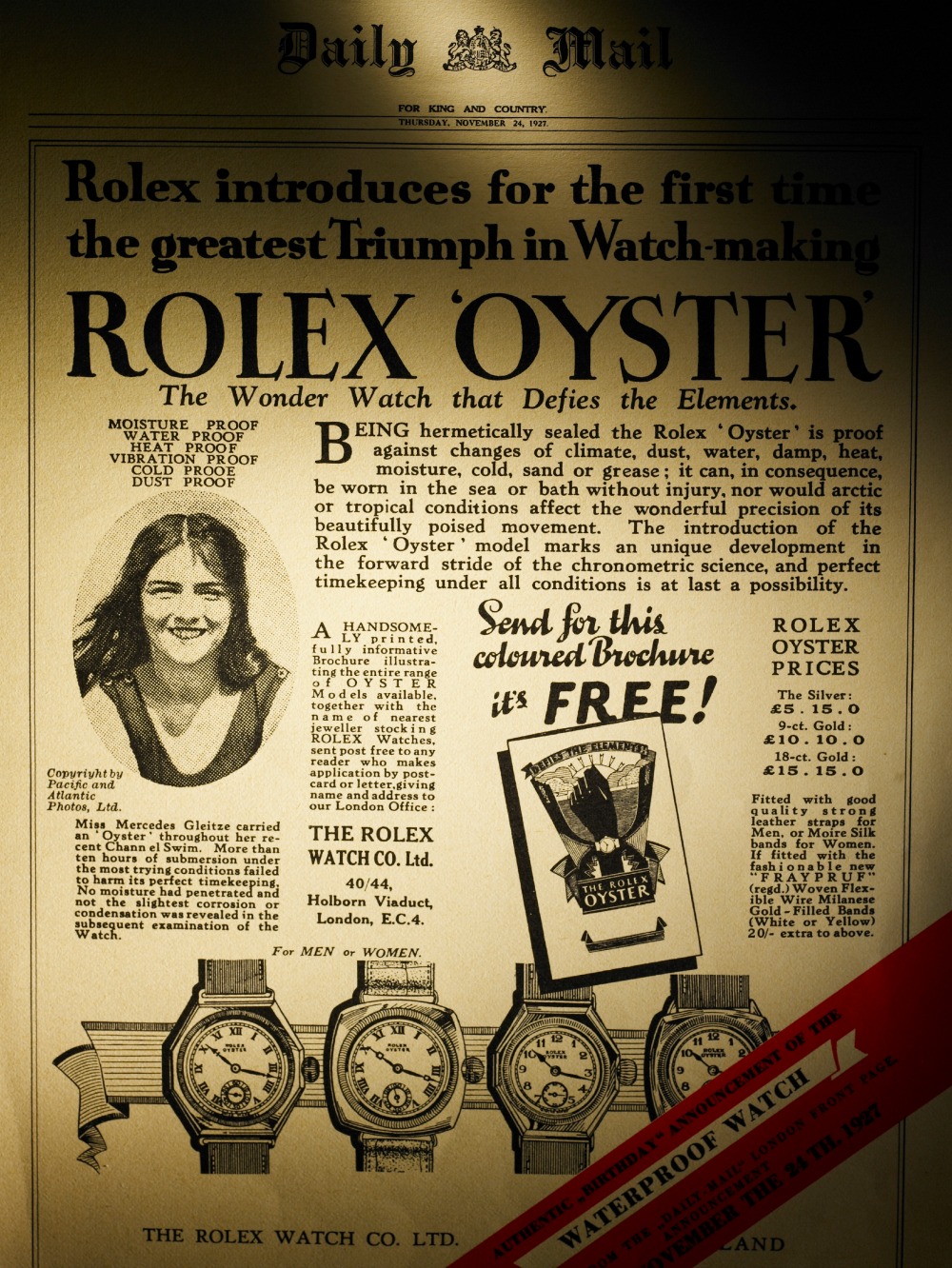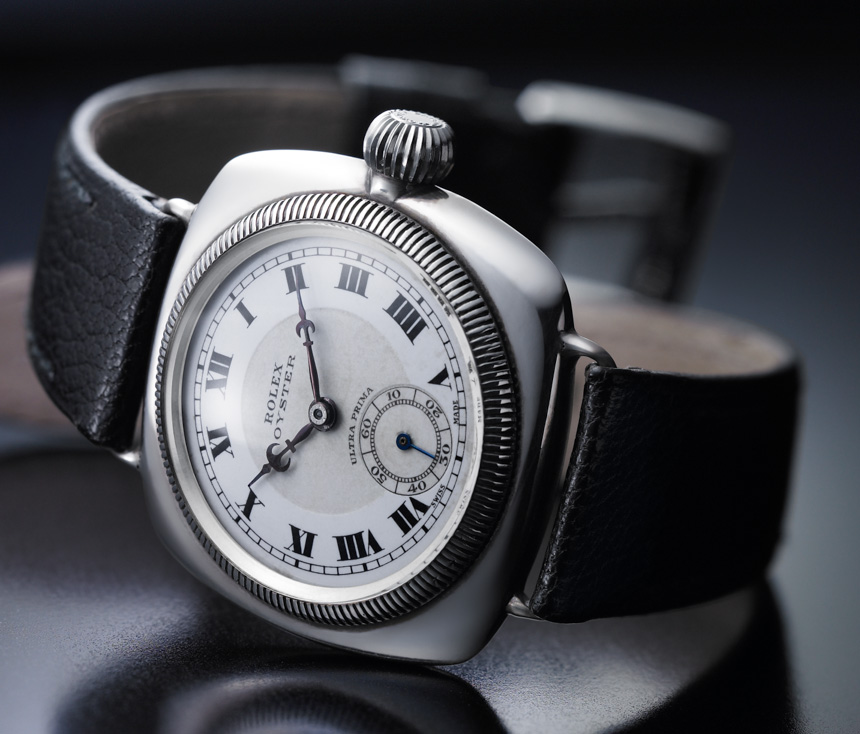
What you see are the two versions of the very first Rolex Oyster watch, in other words, the world’s first water-resistant timepiece. It was proven on the wrist of a swimmer, and when it was released in 1926 it was a rather big deal. The origin of the Oyster name is rather straightforward, borrowed from the sea-dwelling mollusk of the same name, and has been a hallmark of Rolex ever since. In fact, all Rolex watches produced today are technically in the Rolex Oyster collection (except the less common Cellini Prince models), sharing the first Rolex Oyster watch’s focus on durability and water resistance.

Original 1926 pre-production Rolex Oyster watch on my wrist from the collection of Rolex expert James Dowling.
Rolex was a young brand when the original Rolex Oyster watch was released, but it was not until later in Rolex’s history did the brand focus on the Rolex Oyster concept almost exclusively. Hans Wilsdorf, German born and living in London, entered the watch industry in 1905 doing timepiece distribution in Britain and the British Empire. He went on to produce his own watches a few years later, and the Rolex name came about in 1908. In about 1920 he moved to Bienne, Switzerland to open Montres Rolex S.A., which is when everything really begun. Just six years later the brand’s hallmark product family would be released. 
 One thing is notably absent from the 1926 Rolex Oyster watches. The trademark crown logo is missing. Rolex didn’t come up with the crown logo until the early 1930s, but you can see that on one of the pieces the Rolex name was presented in the same font and style that it is in today. You’ll also notice the fluted bezel, which is also a hallmark of Rolex design on today’s Datejust and Day-Date models (among others) This was part of the patented water-resistance system employed in the Rolex Oyster. Hermetically sealed, the Rolex Oyster was innovative not just for being able to be taken into the water, but for resisting a range of liquids and particles such as dust from entering the case. The system was all about screwed-down elements. The original Rolex Oyster watch was innovative because the case back, bezel, and crown were all screwed-down. The fluted bezel was an important part of this because Rolex developed special tools which allowed them to tightly seal up the cases… more »
One thing is notably absent from the 1926 Rolex Oyster watches. The trademark crown logo is missing. Rolex didn’t come up with the crown logo until the early 1930s, but you can see that on one of the pieces the Rolex name was presented in the same font and style that it is in today. You’ll also notice the fluted bezel, which is also a hallmark of Rolex design on today’s Datejust and Day-Date models (among others) This was part of the patented water-resistance system employed in the Rolex Oyster. Hermetically sealed, the Rolex Oyster was innovative not just for being able to be taken into the water, but for resisting a range of liquids and particles such as dust from entering the case. The system was all about screwed-down elements. The original Rolex Oyster watch was innovative because the case back, bezel, and crown were all screwed-down. The fluted bezel was an important part of this because Rolex developed special tools which allowed them to tightly seal up the cases… more »
